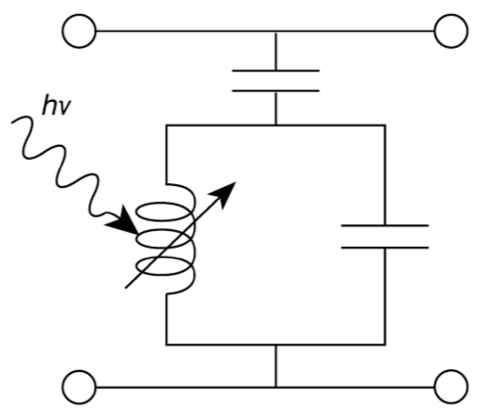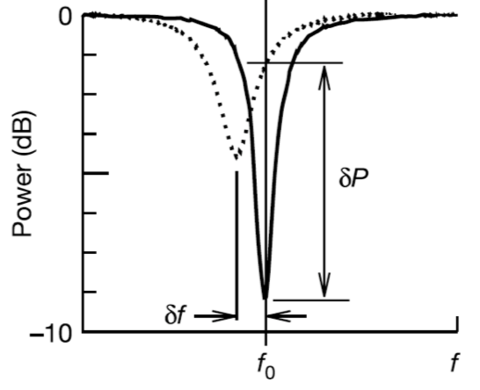Summary
The detection of low energy charged particles is essential to high precision fundamental physics experiments, particularly with neutron beta decay. The majority of these experiments have traditionally used semiconductor detectors but are beginning to reach their limits; an increase in precision will require a complete revision of the charged particle detectors. One promising avenue of exploration is cryogenic (sub-1 K) quantum detectors. These detectors have been used in X-ray and gamma spectroscopy as well as dark matter searches and have been shown to have photon energy resolutions on the order of tens of eV or better. They can be multiplexed to create large area detectors with energy resolutions less than 1 keV, which would revolutionize the next generation of neutron beta decay experiments. This program aims to test and optimize a class of these detectors, called thermal kinetic inductance detectors (TKIDs), for charged particle detection in neutron beta decay experiments.
Description
Quantum cryogenic detectors have proven very promising for x-ray and gamma-ray spectroscopy. The suppression of thermal noise due to cryogenic (sub-1K) temperatures leads to excellent energy resolution while still allowing for large collection areas and high absorption efficiency. Specifically, the Quantum Sensors Group at the National Institute of Standards and Technology (NIST) has shown that microwave kinetic inductance detectors (MKIDs) and their subset of thermal kinetic inductance detectors (TKIDs) have reached tens of eV resolution, and are easily scaled for large arrays [1,2]. However, these methods have not yet been explored for external charged particle detection.

How do these detectors work? Superconducting material has a nonzero surface impedance when an AC current is applied. This impedance manifests from the inertia of the free electrons from broken Cooper pairs, or quasiparticles. Incident ionizing radiation on the superconductor with enough energy to break a Cooper pair creates an excess of quasiparticles, which changes the impedance of the material (see Fig. 1). By creating a resonant circuit with this impedance, the energy absorption becomes a frequency measurement (see Fig. 2). This is advantageous in multiplexing, where the individual detector circuits can be tuned to a different resonance frequencies. It has been shown that MKIDs and TKIDs can be multiplexed on the order of kilo-pixels [2]. This potential for multiplexing makes TKIDs a promising avenue for charged particle detection. Developing a detector that reaches a lower energy detection threshold, thereby eliminating the need for an accelerating field, and can be multiplexed into a large area array could greatly expand the physics reach of next generation beta decay experiments.

In conjunction with the NIST Quantum Sensors Group, we are developing a working prototype with which we can begin to explore the parameter space needed for external charged particle detection. Current simulations show that this simple prototype should have an energy resolution of about 500 eV for energy deposits of about 800 keV. Once our initial prototype is fabricated, we plan to test its capabilities for charged particle detection. We plan to use a variety of monoenergetic beta sources such as 57Co and 109Cd to characterize the detector performance. For example, energy resolution can be calculated from the width of the monoenergetic conversion electron. By varying the beta source, the dynamic range and linearity can be explored using different conversion electron energies. We can explore the position sensitivity of the device by precisely scanning the source position and focusing the source particles using a magnetic field or careful collimation design.
There are two major goals for this project. The first is to fully characterize TKID performance for charged particle detection. The second goal is to develop TKID detectors that can be used in a next-generation emiT experiment. This experiment searches for a non-zero measurement of the triple-correlation term D $$({\hat{\sigma}}_n\cdot\vec{p_e}\ \times\vec{p_\nu}\ )$$ in polarized neutron decay, which would indicate a violation of time-reversal symmetry. Application of cryogenic detectors to emiT would both improve the experimental uncertainty due to proton energy resolution and remove the systematic effects that accompany the traditionally used silicon semiconductor detectors.
1. Ullom, J. N. & Bennett, D. A. Review of superconducting transition-edge sensors for x-ray and gamma-ray spectroscopy. Superconductor Science and Technology 28, 084003–37 (2015).
2. Ulbricht, G. et al. Highly multiplexible thermal kinetic inductance detectors for x-ray imaging spectroscopy. Applied Physics Letters 106, 251103–5 (2015).
3. Mumm, H. P. et al. emiT: An apparatus to test time reversal invariance in polarized neutron decay. Review of Scientific Instruments 75, 5343–5355 (2004).
4. Day, P. K., LeDuc, H. G., Mazin, B. A., Vayonakis, A. & Zmuidzinas, J. A broadband superconducting detector suitable for use in large arrays. Nature 425, 817–821 (2003).

